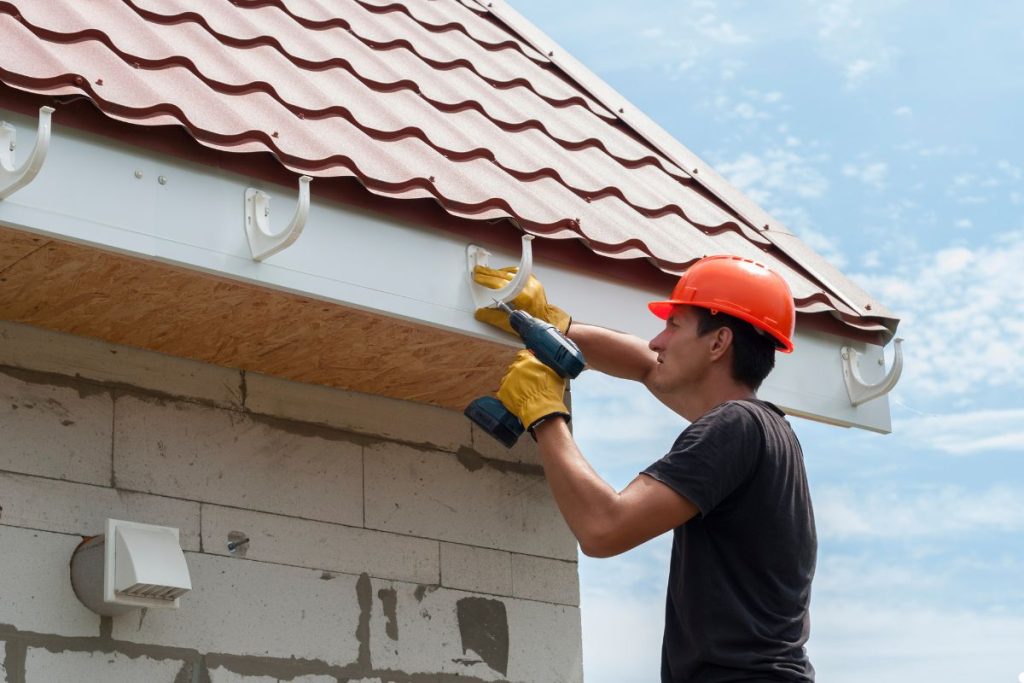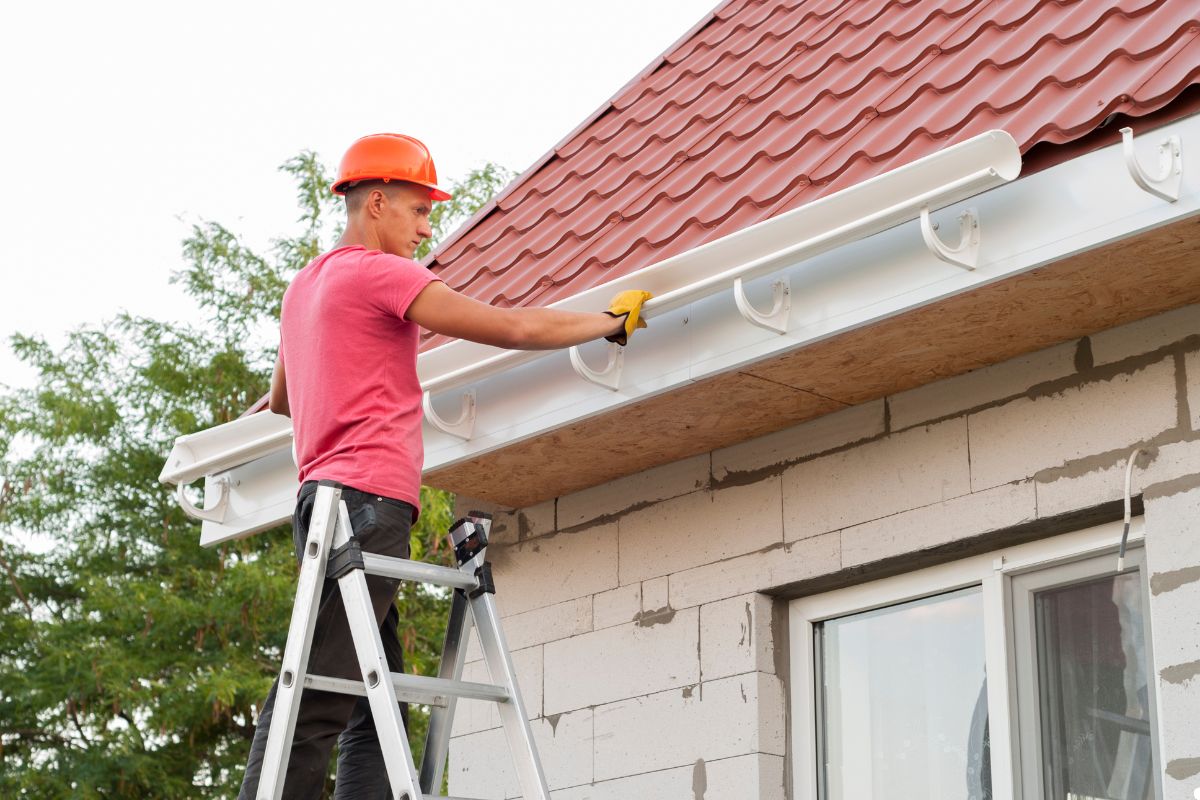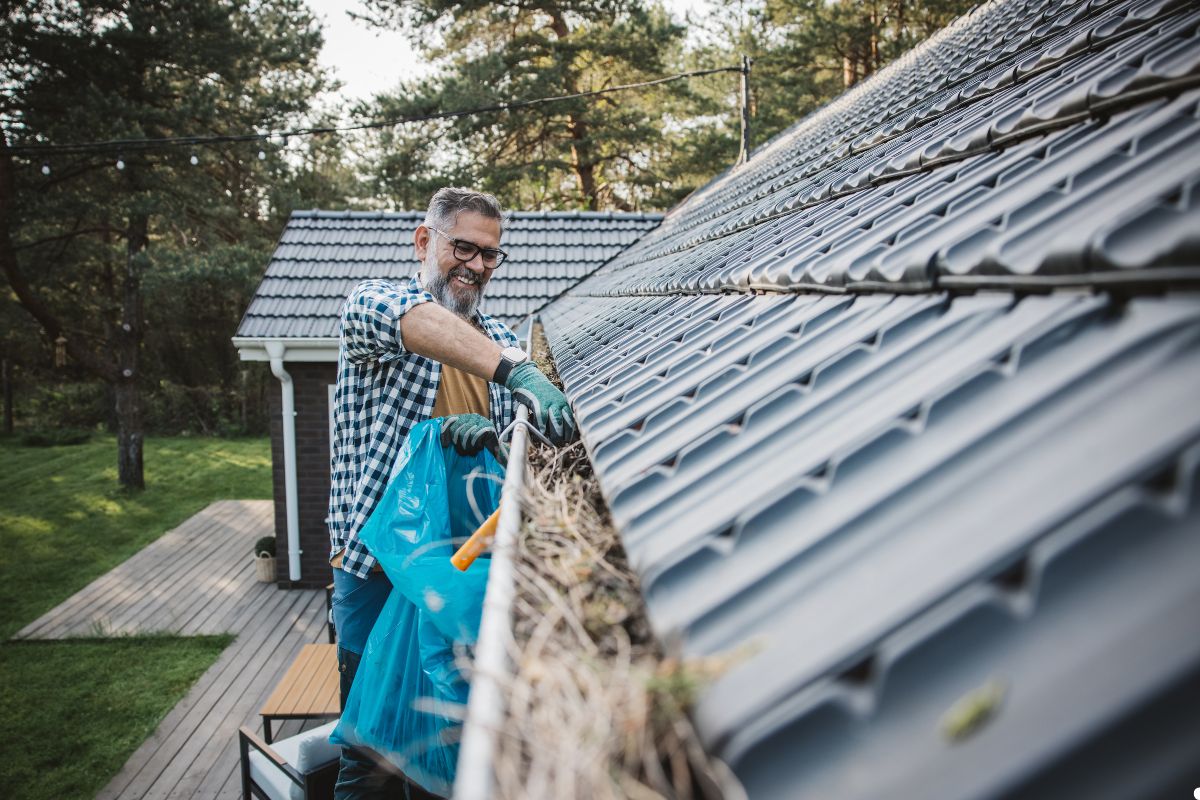
While not always mandatory, gutters play a crucial role in protecting your home from costly water damage. This comprehensive guide will walk you through the benefits of gutters, potential drawbacks, alternatives, and factors to consider when making your decision. For expert advice and installation, call us today! We’re here to help protect your home.
What are Gutters and How Do They Work?
Gutters are channels installed along the edge of your roof, designed to collect rainwater and direct it away from your home’s foundation. A typical gutter system consists of the gutters themselves, downspouts (vertical pipes that carry water from the gutters to the ground), and connecting components. By channeling water away, gutters services prevent it from pooling around the foundation, eroding the soil, and damaging your siding. Understanding their function is the first step in determining their necessity for your home.

The Benefits of Having Gutters
Investing in a gutter system offers a multitude of benefits, protecting your home from a variety of potential water-related issues. Let’s delve into the specifics:
Protecting Your Foundation
One of the most significant benefits of gutters is their ability to protect your foundation. Without gutters, rainwater can accumulate around the base of your home, saturating the soil. This can lead to cracks in the foundation, which can compromise the structural integrity of your home and potentially lead to costly repairs. Properly installed gutters direct water away, keeping your foundation dry and stable.
Preventing Soil Erosion
Rainwater cascading off your roof can erode the soil around your foundation and landscaping. This erosion can damage your plants, create unsightly ruts in your yard, and even undermine walkways and driveways. Gutters prevent this by controlling the flow of water and directing it to designated drainage areas.
Protecting Your Siding and Exterior Paint
Water constantly splashing onto your siding can lead to a host of problems, including rot, mold growth, and peeling paint. Gutters prevent this by directing water away from the walls of your home, preserving the integrity and appearance of your siding and exterior paint. This is especially crucial for homes with wood siding, which is particularly susceptible to water damage.
Preventing Basement Flooding
Excessive water pooling around your foundation can seep into your basement, leading to flooding and water damage. Gutters play a vital role in preventing basement flooding by diverting water away from the foundation and reducing the risk of water intrusion.
Preventing Damage to Walkways and Driveways
Uncontrolled water runoff from your roof can damage walkways and driveways over time. The constant flow of water can erode the surface, leading to cracks and deterioration. In colder climates, water runoff can freeze and expand, causing even more significant damage. Gutters help prevent this by directing water away from these surfaces.
Situations Where Gutters Are Particularly Important
While gutters are generally beneficial, there are certain situations where they become even more crucial:
Homes in Areas with High Rainfall
If you live in an area with frequent and heavy rainfall, gutters are an absolute necessity. The more rain your roof is exposed to, the more critical it is to have a system in place to manage the water and protect your home from damage.
Homes with Sloped Landscaping
If your property has sloped landscaping that directs water towards your house, gutters are essential. Without gutters, rainwater will naturally flow towards your foundation, increasing the risk of water damage.
Homes with Susceptible Siding Materials
Homes with siding materials that are prone to water damage, such as wood, should always have gutters. Wood siding is particularly vulnerable to rot and mold growth, and gutters can significantly reduce the risk of these problems.
It’s also important to make sure you have the right kind of gutters for your home. If you are looking into aluminum gutters, it’s important to know the benefits and drawbacks of aluminum gutters.
Potential Drawbacks of Gutters
While the benefits of gutters generally outweigh the drawbacks, it’s important to be aware of the potential downsides:
Cost of Installation and Maintenance
Installing a gutter system can be a significant upfront investment. Additionally, gutters require regular maintenance, such as cleaning and repairs, which can add to the overall cost. However, the cost of not having gutters damage and dealing with water damage can be far greater.
Maintenance Requirements (Cleaning)
Gutters need to be cleaned regularly to remove leaves, debris, and other obstructions. Clogged gutters can’t function properly and can lead to water overflowing and causing damage to your home. The frequency of cleaning depends on the surrounding environment, but generally, gutters should be cleaned at least twice a year.
Potential for Ice Dams in Cold Climates
In cold climates, gutters can contribute to the formation of ice dams. Ice dams occur when snow melts on a warm roof and then refreezes at the edge of the roof, forming a dam that prevents water from draining properly. This can lead to water backing up under the shingles and causing leaks.
Alternatives to Traditional Gutters
If you’re not convinced that traditional gutters are the right choice for your home, there are several alternatives to consider:
Rain Chains
Rain chains are decorative alternatives to downspouts. They consist of a series of cups or links that guide water from the gutters to the ground. While rain chains can add an aesthetic touch to your home, they may not be as effective as traditional downspouts at diverting water away from the foundation.
Drip Edge
A drip edge is a metal flashing installed along the edge of your roof that helps direct water away from the fascia board. While a drip edge can help prevent water from seeping behind the fascia, it doesn’t collect and channel water like gutters do.
Rain Barrels
Rain barrels are containers used to collect rainwater runoff from your roof. Rain barrels can be a great way to conserve water and reduce your water bill, but they don’t provide the same level of protection as gutters in terms of preventing water damage to your home.
Factors to Consider When Deciding If You Need Gutters
Ultimately, the decision of whether or not to install gutters depends on a variety of factors:
Climate
Your local climate and rainfall patterns are key considerations. If you live in an area with frequent and heavy rainfall, gutters are likely essential. In drier climates, you may be able to get by without them.
Home’s Design and Landscaping
The design of your home and the surrounding landscaping can also influence the need for gutters. If your property has sloped landscaping that directs water towards your house, or if your home has a complex roofline, gutters are likely necessary.
Budget
Your budget is another important factor to consider. Gutters can be a significant investment, and you’ll need to factor in the cost of installation and maintenance. However, remember that the cost of not having gutters can be far greater if you end up with water damage.
It may be beneficial to look at common gutter problems as you consider installing gutters.
Choosing the Right Type of Gutters
If you decide to install gutters, you’ll need to choose the right type for your home. There are several different materials and styles to choose from:
Gutter Materials (Aluminum, Vinyl, Copper, Steel)
Gutters are available in a variety of materials, each with its own pros and cons. Aluminum gutters are lightweight, affordable, and rust-resistant. Vinyl gutters are even more affordable, but they’re not as durable as aluminum. Copper gutters are the most expensive option, but they’re also the most durable and aesthetically pleasing. Steel gutters are strong and durable, but they’re also heavy and prone to rust.
Gutter Styles (K-Style, Half-Round, etc.)
Gutters also come in a variety of styles. K-style gutters are the most common type, characterized by their flat bottoms and curved fronts. Half-round gutters have a semicircular shape and are often used on older homes. Other styles include box gutters and fascia gutters.

Professional Gutter Installation vs. DIY
You have two options for installing gutters: hire a professional or do it yourself. Hiring a professional ensures that the gutters are installed correctly and efficiently. DIY installation can save you money, but it requires some knowledge and skill.
If you decide to install your gutters yourself, it’s helpful to have a gutter replacement guide.
Conclusion
In conclusion, while not always strictly required, gutters are generally a wise investment for homeowners in the USA. They provide essential protection against water damage, preventing costly repairs to your foundation, siding, and landscaping. By carefully considering your climate, home’s design, and budget, you can determine whether gutters are right for you. Don’t underestimate the importance of directing water away from your home – it’s a simple step that can save you a lot of headaches in the long run. If you are still undecided about installing gutters, call us your local gutter professional to learn more about the benefits of seamless gutters.
Frequently Asked Questions (FAQs)
How often should I clean my gutters?
Ideally, clean your gutters at least twice a year, in the spring and fall. If you live in an area with many trees, you may need to clean them more often.
What are the signs that my gutters need repair?
Signs that your gutters need repair include sagging, leaking, rust, and detached sections.
Can I install gutters myself?
Yes, you can install gutters yourself if you have some experience with home improvement projects. However, it’s important to follow the instructions carefully and take safety precautions.
How much does it cost to install gutters?
The cost of gutter installation varies depending on the material, style, and size of your home. On average, you can expect to pay between $5 and $25 per linear foot.
What are seamless gutters?
Seamless gutters are custom-made gutters that are installed in one continuous piece, eliminating seams and reducing the risk of leaks. Protect your home with seamless gutters today! Contact us for a free consultation and seamless installation.
